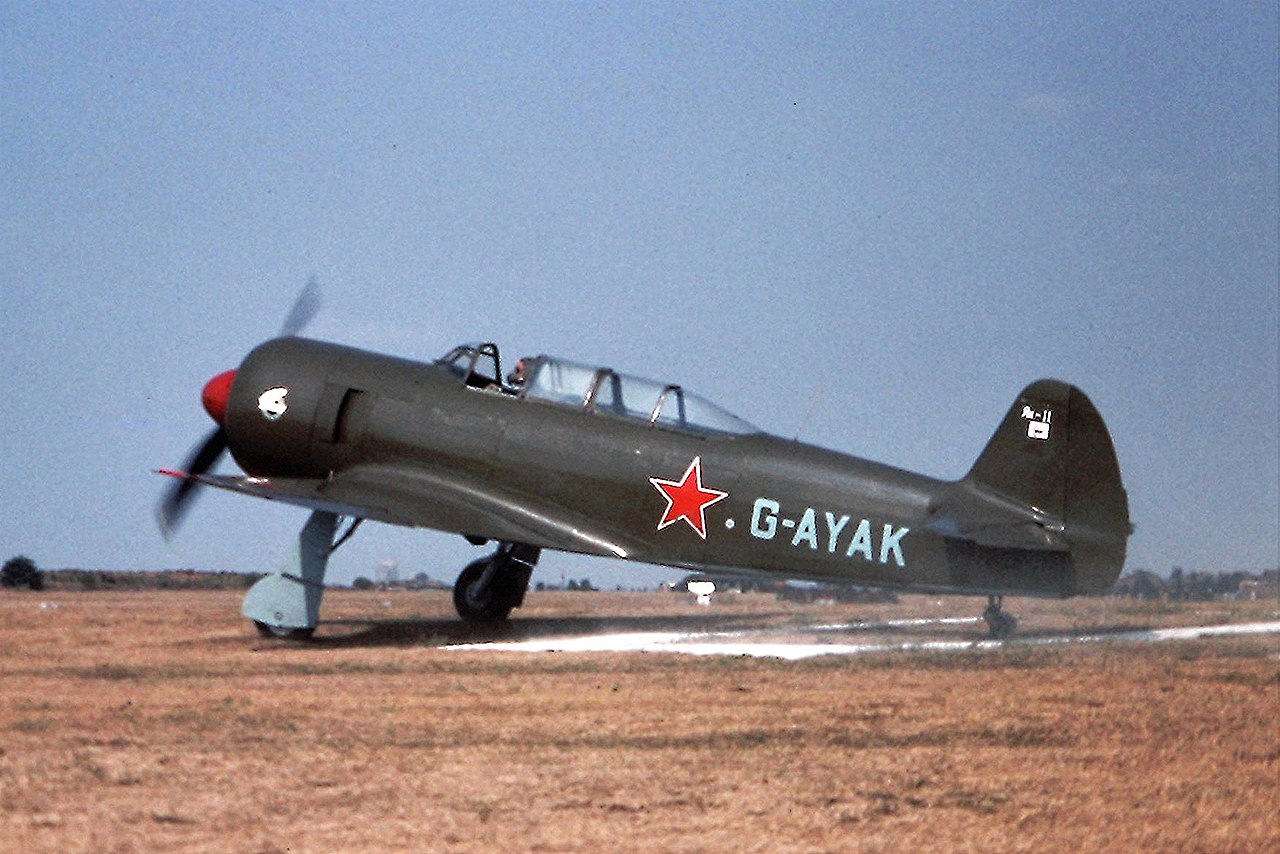“Our first burst hit the rear of the fuselage and knocked some pieces off. The Yak pilot racked it over in a steep turn to the right and we gave him another burst along the right wing…,” 1st Lt C. Fraser, F-82 Twin Mustang navigator.
The US Air Force’s last major acquisition of a propeller-driven fighter was the F-82. Although it appeared to be two P-51 Mustang fuselages on one wing, the aircraft was actually entirely original in design. For long-range bomber escort missions, the Twin Mustang carried a pilot and a co-pilot/navigator to lessen pilot fatigue. Early 1946 saw the start of production delivery, which was too late to prevent World War II. Following World War II, the P-61 night fighter was replaced by radar-equipped F-82Gs flown by Air Defense Command. F-82Gs based in Japan were among the first USAF aircraft to fly over Korea during the Korean War.
The Republic of Korea Army (ROKA) lines around Seoul were breached by the North Korean Army (KPA) on June 27, 1950, and the Korea People’s Army Air Force (KPAAF) focused on targets in the ROKA rear areas.
The Anyang rail station and other military sites were attacked by KPAAF Il-10s between Seoul and Suwon, as detailed by Michael Napier in his book Korean Air War. The US military had already realized that Seoul would fall sooner rather than later and an emergency air evacuation had been quickly arranged for all remaining US and UN personnel. A fleet of two C-54 and 11 Douglas C-47 Skytrain transports was assembled together from disparate units in Japan to extract the remaining personnel from Kimpo Air Base, starting at dawn. Under a high cover of F-80s, F-82s heavily escorted the transport aircraft.
When the KPAAF focused on other targets in the morning, the US mission was unhindered. But, in the afternoon, a Yak-11 led four Yak-9Ps to interfere with the evacuation airlift. The KPAAF fighters had to pass through the F-82 Combat Air Patrol (CAP) in order to get to the transport aircraft.
They dove into the four F-82s of the 68th Fighter (All-Weather) Squadrons (68th F(AW)S), which were the low CAP at 4,000 feet, as they crossed Seoul at a height of 10,000 feet. The USAF crews managed to turn the tables despite being caught off guard and taking several hits. Soon after, the Yak-11 was shot down by 1st Lts W. G. Hudson and C. Fraser, becoming the first air-to-air casualty of the Korean War.

Fraser recalls;
‘We were circling over Kimpo when two North Korean fighters came up out of some low clouds and started after Charlie Moran and Fred Larkins, who were flying the Number Four ship in our flight. The North Korean shooting was a little better than yesterday and they shot up Charlie’s tail. My pilot ‘Skeeter’ Hudson slipped around and got on the tail of their flight leader. When the guy realized that we were there, he pulled up into some clouds and tried to shake us off. Fortunately, we were so close that we could see him even in the middle of the clouds. Our first burst hit the rear of the fuselage and knocked some pieces off. The Yak pilot racked it over in a steep turn to the right and we gave him another burst along the right wing. This set the gas tank on fire and took the right flap and aileron off. By this time, we were so close that we nearly collided with him. I could clearly see the pilot turn around and say something to the observer. Then he pulled the canopy back and climbed onto the wing. Once again, he leaned in and said something to the observer. But he was either scared or wounded as he never attempted to jump. The Yak pilot pulled the ripcord and the chute dragged him off the wing, just before the ship rolled over and went in. The whole action took place below 1,000 ft. Later we found that Moran had evaded the Yak, but in doing so he had stalled out. When he recovered, he found himself dead astern of the other Yak and shot it down.’
Due to severe damage, Lt C. B. Moran and Lt F. Larkins’ F-82 had to make a forced landing at Suwon (K-13).
A second Yak-9P was taken out by reinforcements from the 339th F(AW)S who were on a nearby patrol. An hour later, a formation of nine Yonpo Il-10s launched another attack on the Kimpo airfield. Four F-80s from the 35th Fighter Bomber Squadron (FBS) intercepted the Il-10s as they reached their target, though, and shot down four of them while seriously damaging another. The remaining members of the formation dispersed into the sky and went back to their homes.
Korean Air War is published by Osprey Publishing and is available to order here.

Photo by U.S. Air Force and Rob Hodgkins via Wikipedia

